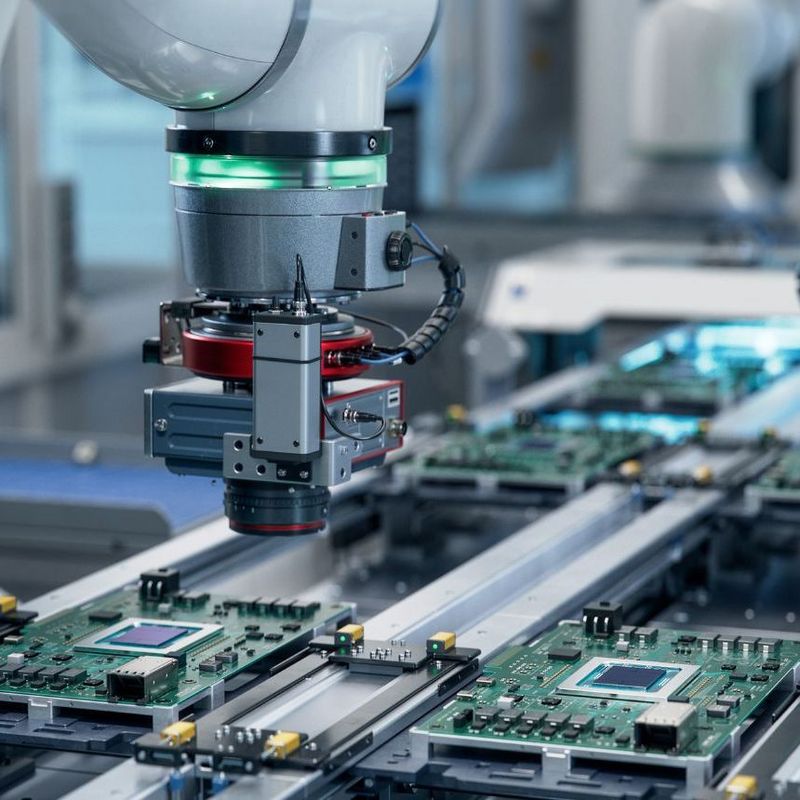06 May 2024
It’s been banned until now, but that looks set to change: The German government wants to clear the way for the underground storage of CO2 on the high seas. At the end of May, the Federal Cabinet initiated an amendment to the law, which still requires the consent of the upper and lower houses of the German parliament. As far as the German government is concerned, storing CO2 in the soil and binding carbon dioxide to create new products are important building blocks in the transition to a carbon-neutral economy. Young enterprises around the world are driving the development of this technology and working on efficient methods to harness it. Here are four examples:
Capturing carbon dioxide in road surfaces
Swiss company Neustark has been working on the separation and storage of CO2 since 2019. This spin-off of ETH Zurich fired up its first plant in Germany and the EU in October 2023. 1,000 tons of CO2 per year can be stored in the Berlin district of Marzahn in the concrete recovered from demolition work. First of all, carbon dioxide is separated out in biogas plants at sites including Dresden. The liquified CO2 is then injected into the grains of crushed concrete recovered from demolitions. This converts it into limestone which is permanently bound to the concrete. This can then be used in road building or to produce recycled concrete. The Neustark technology can store ten kilos of CO2 in one ton of demolition concrete. In this way, a single plant can do in an hour what it takes 50 trees a year to do, the start-up claims.
The Swiss company already has twelve plants in operation, and 15 more are planned for the Swiss Confederation, Austria and France. But even the colossal amounts of demolition concrete generated around the world each year are not unlimited. This is why Neustark also intends to store CO2 permanently underground. The idea is for the carbon dioxide generated by Swiss biogas plants to be exported in liquified form to Norway or Iceland by rail, sea and lorry.
Sucking up CO2 on the island of volcanoes
Neustark’s choice of Iceland was no accident. This volcanic island’s geological features make it especially suitable for the permanent underground storage of large volumes of CO2. Which is why another young Swiss company has also discovered Iceland. Climeworks was also set up by ETH Zurich but relies on a different method. In this procedure, the carbon dioxide is filtered directly out of the atmosphere.
Huge fans suck air into the plant, where the CO2 is captured in a special filter in a collector. Once the filter material has become saturated, the collector is closed and heated to 100 degrees Celsius. The CO2 is released once again, dissolved in water and pumped into strata of porous rock up to 1,000 metres below the surface of the ocean. Once there, it reacts chemically with the minerals in the rock – and begins to petrify. This process takes about two years. Once it is complete, the CO2 should theoretically be safely stored in rock forever.
High energy needs
This method is known as “Direct Air Carbon Capture and Storage” (DACCS) and can also be used to remove diffuse CO2 emissions from the atmosphere. These emissions are not those released in massive amounts from tall chimneys but the waste gases produced by cars or agriculture. As the concentration of this greenhouse gas in the atmosphere is, of course, much lower than it is in a biogas plant, steelworks or cement factory, DACCS requires significantly more energy than the Neustark method. Researchers from the University of Freiburg have calculated that 0.3 of a ton of CO2 is currently emitted per ton of separated CO2. The higher the share of renewables used to power the plant, the lower the CO2 emissions.
Climeworks is accordingly attempting to cover the huge amount of energy required by its CO2 suction device with sustainable energy from deep below the Earth’s surface. The company’s plant is supplied with electricity and heat by a neighbouring geothermal power station. Thanks to its volcanic origin, hot water from Icelandic thermal springs can be extracted from below ground in high volumes and at a correspondingly low cost.
East of Reykjavik (Iceland), a Climeworks plant is installed that filters CO2 directly from the ambient air.
Object of many research projects: The brown alga Sargassum grows quickly and can store significantly more CO2 than trees.
Major project in the US
The plant is designed to store 4,000 tonnes of CO2 per annum, 1,000 tons of which will be reserved for the carmaker Audi, which part-owns the company. In the meantime, the climate start-up has also commissioned a second CO2 catcher in Iceland, which is scheduled for completion in the course of the year. In its final development stage it will be able to save about 36,000 tons of CO2 per annum. This makes the CO2 vacuum cleaner, known as “Mammoth”, the largest DACCS system in the world. Climeworks aims to extract carbon dioxide from the air on an even greater scale in the US. The plants are intended to capture a million tons of CO2. This would be equivalent to the annual emissions of some 445,000 petrol cars, says the US energy ministry, which is sponsoring both projects.
That sounds like a lot. And yet, some 49 million cars are on the road in Germany alone, most of which – for now, at least – still run on petrol and diesel. The volume of unavoidable CO2 emissions, for example from industrial processes, which it will remain impossible to replace with fossil-free alternatives, is estimated at 34 to 73 million tons per annum in Germany. It would accordingly take 73 huge CO2 suction units to extract these massive volumes of CO2 from the atmosphere.
But if this is to work, these CO2 capture devices will need to make economic sense for their operators. The DACCS method, in particular, is currently a long way away from profitability. For this to change, it will be necessary, on the one hand, for the price of CO2 certificates to rise quite a lot, but also for the technology’s energy requirement to fall.
Alternative filters
Austrian company Krajete aims to achieve its goals using an alternative filter material. Krajete has teamed up with Audi in Linz to operate a plant which works with an inorganic filter material. This can absorb a large number of CO2 molecules and is also particularly insensitive to wet conditions. It is therefore not generally necessary to heat up the air that gets drawn in in the separation process – and this saves both energy and time. The expectation is that it will be possible to filter CO2 out of the air both more quickly and more cheaply. According to the company, the costs for one ton of CO2 are already in the low three figures. The plant is powered by a solar installation on the company’s premises.
Biological CO2 capture equipment
Alongside technological methods there are, of course, also biological ways to bind carbon dioxide: Planting forests or restoring dried-out marshland, for instance. The MacroCarbon start-up founded by marine biologist Mar Fernández-Méndez from the Alfred-Wegener-Institute is particularly keen on algae: Sargassum is a brown algae that grows especially fast and, according to the researchers, can store much more CO2 than trees. Moreover, these marine plants do not take up valuable land, and nor is fresh water needed to cultivate them.
This start-up, which is funded by the German Federal Agency for Disruptive Innovation, also has algae in its sights to produce basic materials for the chemical industry – for instance organic naphtha, a kind of crude petroleum which might be able to replace products currently derived from fossil fuels. The start-up is working with chemical giant BASF on this project.
By 2040, MacroCarbon aims to be using enormous algae farms on the high seas to bind 100 million tonnes of CO2 emissions per annum, climbing to one gigatonne by 2050. First of all, however, the start-up has to be able to prove that its cultivation method actually works and its organic crude petroleum will find enough takers. In this way, cultivating the brown algae could make a growing contribution to protecting the climate.





